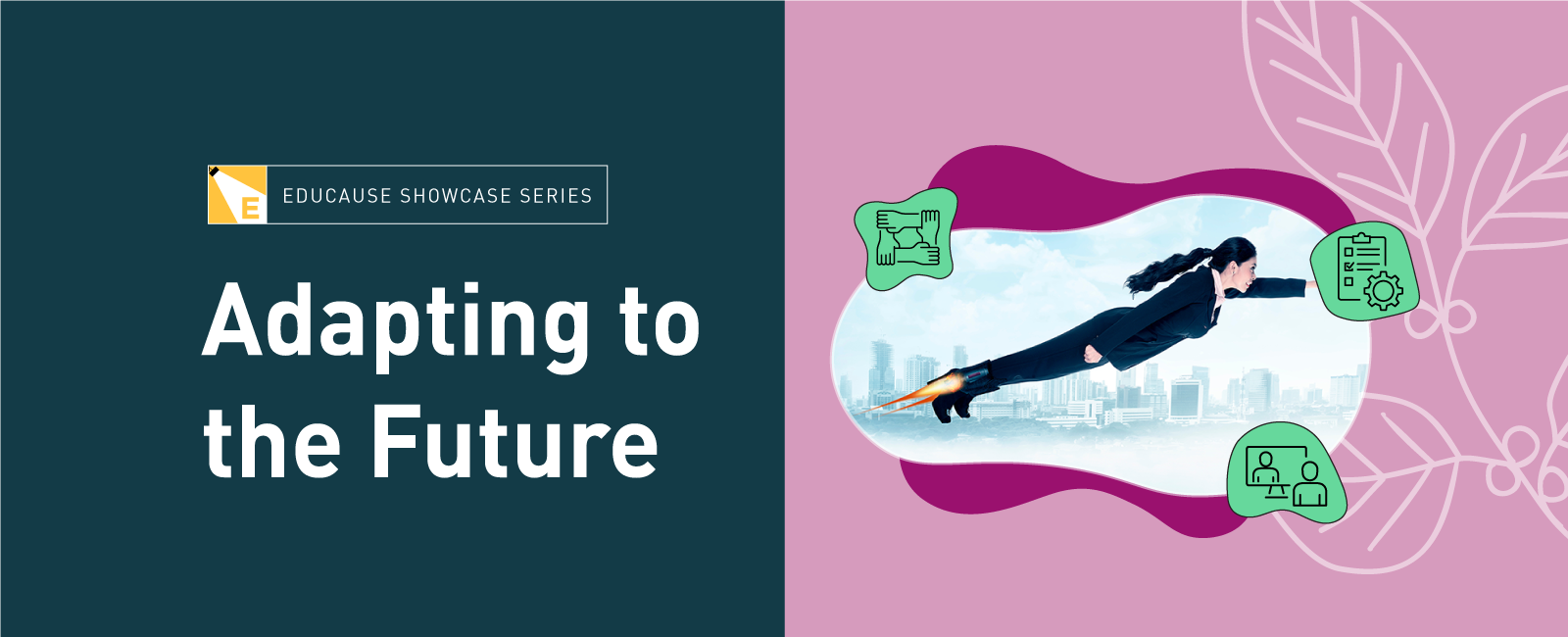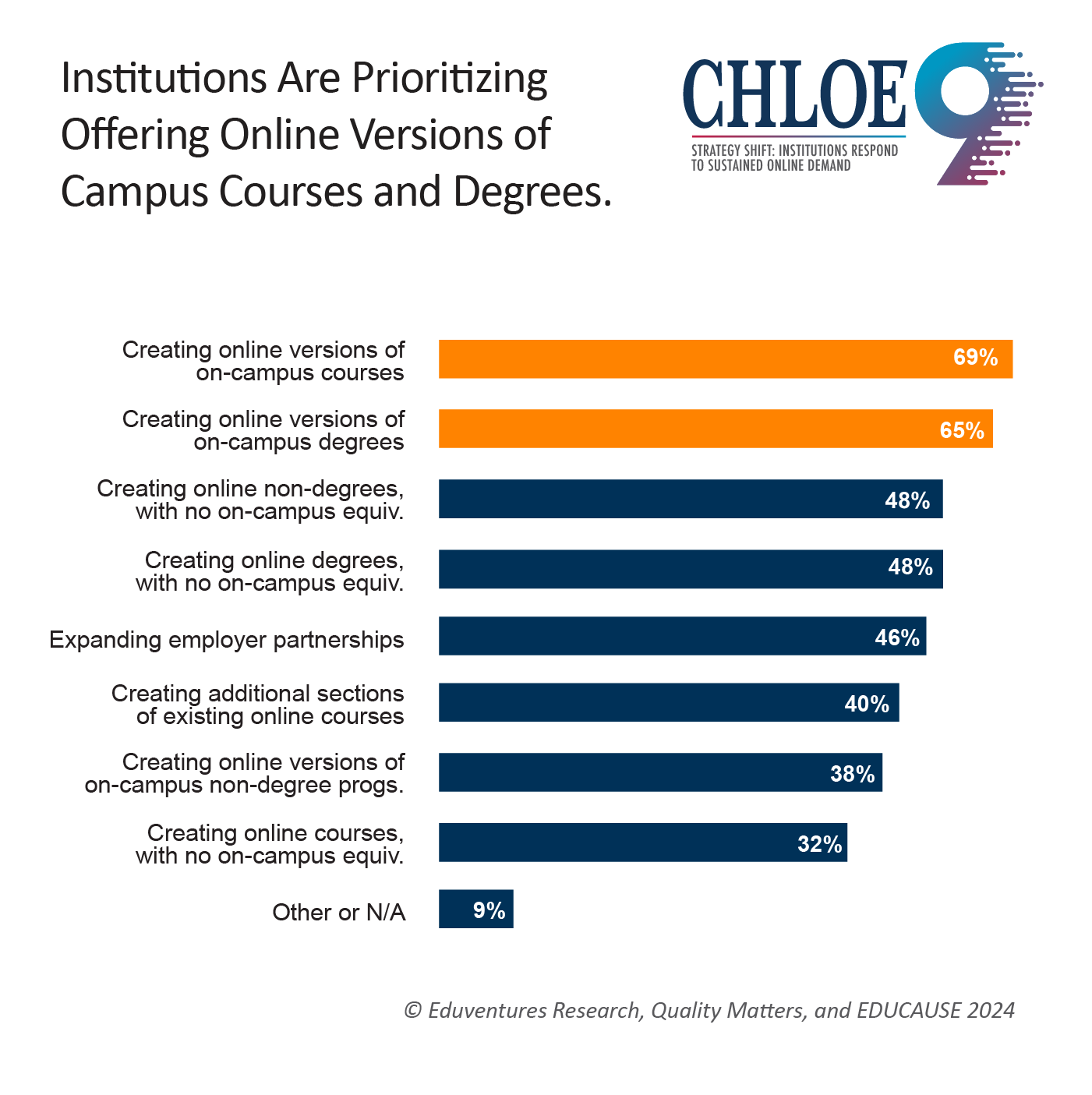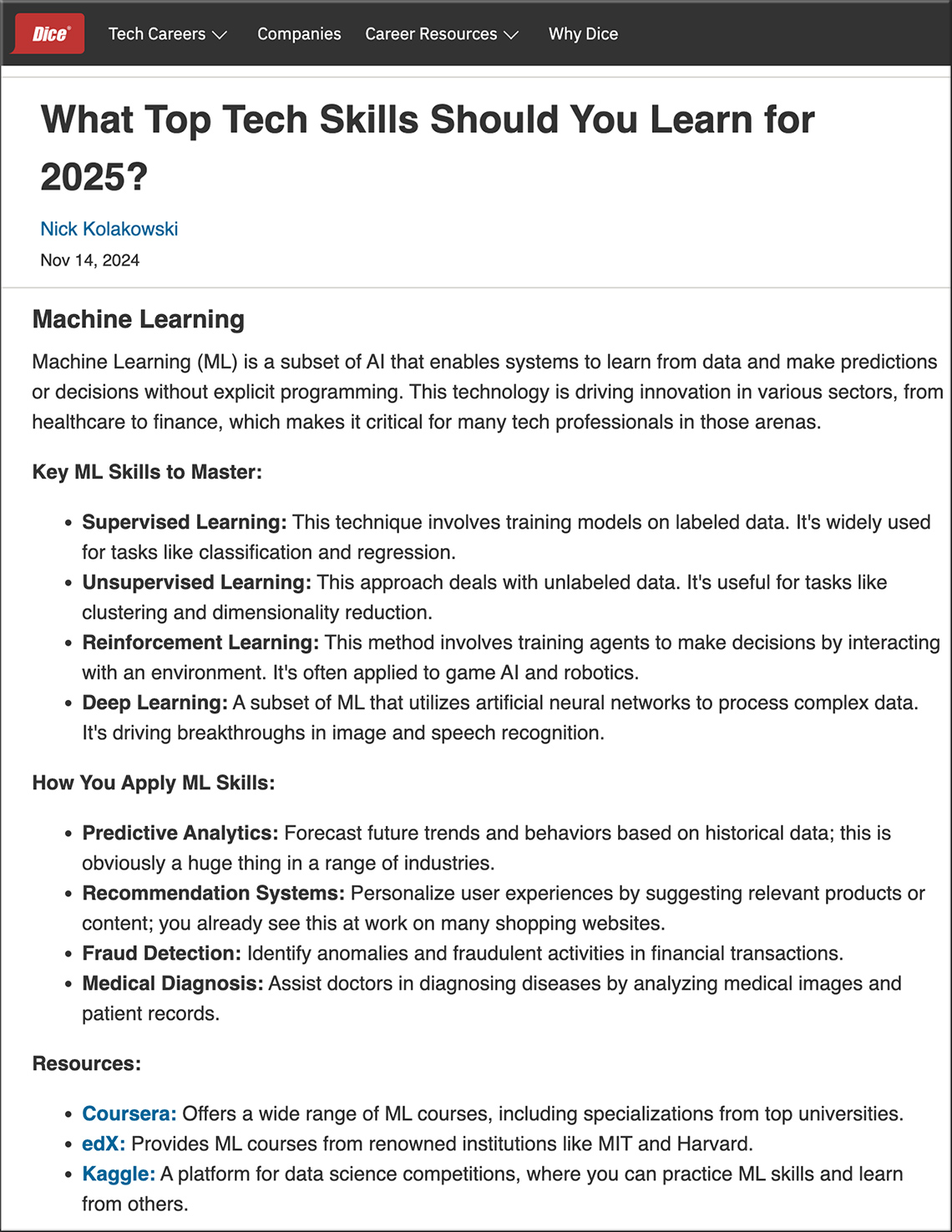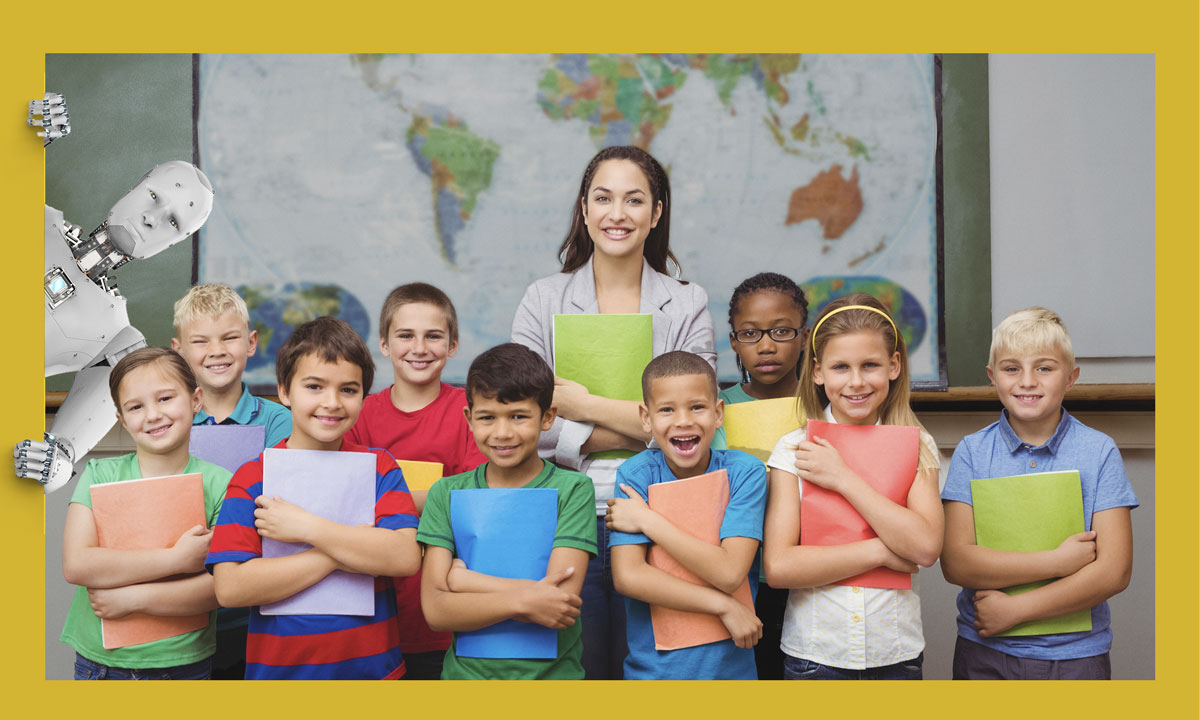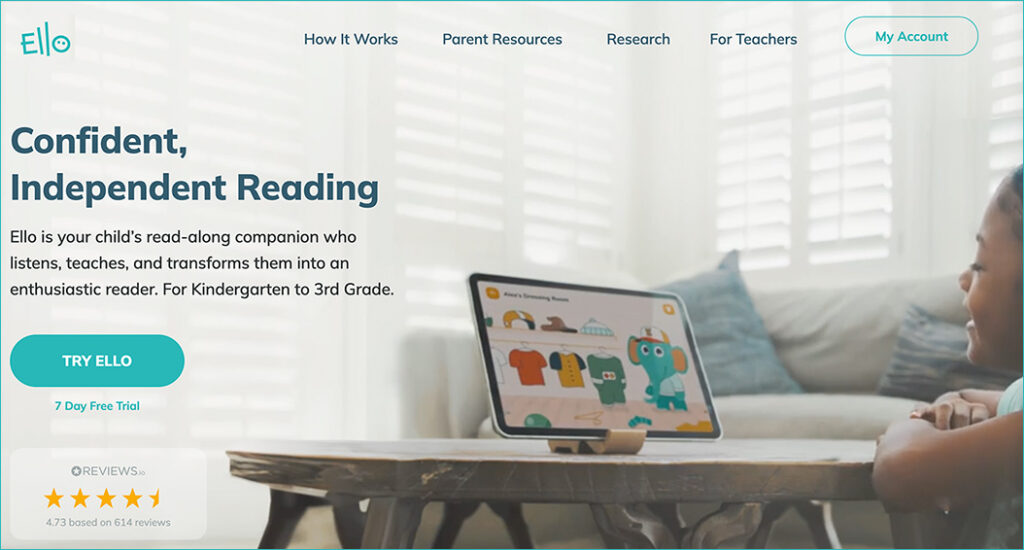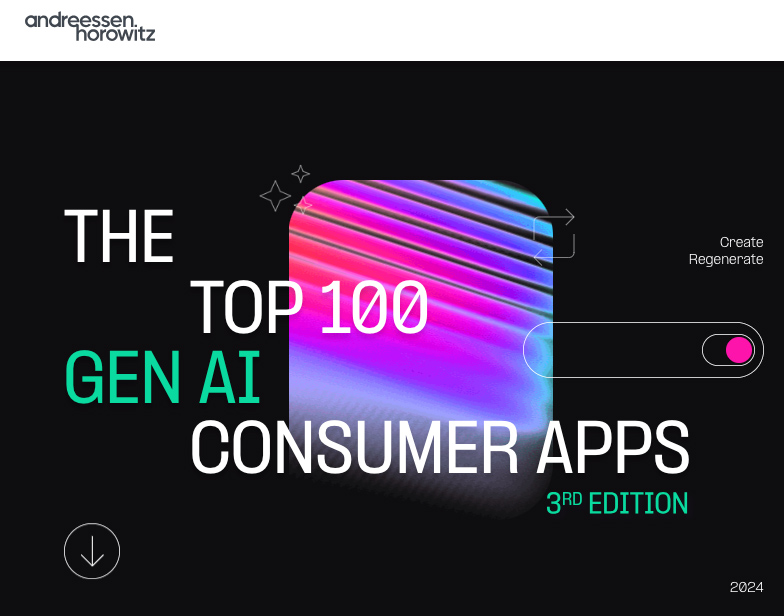The World Economic Forum Future of Jobs Report 2025 — from weforum.org
How AI Is Changing Education: The Year’s Top 5 Stories — from edweek.org by Alyson Klein
Ever since a new revolutionary version of chat ChatGPT became operable in late 2022, educators have faced several complex challenges as they learn how to navigate artificial intelligence systems.
…
Education Week produced a significant amount of coverage in 2024 exploring these and other critical questions involving the understanding and use of AI.
Here are the five most popular stories that Education Week published in 2024 about AI in schools.
What’s next with AI in higher education? — from msn.com by Science X Staff
Dr. Lodge said there are five key areas the higher education sector needs to address to adapt to the use of AI:
1. Teach ‘people’ skills as well as tech skills
2. Help all students use new tech
3. Prepare students for the jobs of the future
4. Learn to make sense of complex information
5. Universities to lead the tech change
5 Ways Teachers Can Use NotebookLM Today — from classtechtips.com by Dr. Monica Burns
60 Minutes Overtime
Sal Khan wants an AI tutor for every student: here’s how it’s working at an Indiana high school — from cbsnews.com by Anderson Cooper, Aliza Chasan, Denise Schrier Cetta, and Katie Brennan
“I mean, that’s what I’ll always want for my own children and, frankly, for anyone’s children,” Khan said. “And the hope here is that we can use artificial intelligence and other technologies to amplify what a teacher can do so they can spend more time standing next to a student, figuring them out, having a person-to-person connection.”
…
“After a week you start to realize, like, how you can use it,” Brockman said. “That’s been one of the really important things about working with Sal and his team, to really figure out what’s the right way to sort of bring this to parents and to teachers and to classrooms and to do that in a way…so that the students really learn and aren’t just, you know, asking for the answers and that the parents can have oversight and the teachers can be involved in that process.”
Nectir lets teachers tailor AI chatbots to provide their students with 24/7 educational support — from techcrunch.com by Lauren Forristal
More than 100 colleges and high schools are turning to a new AI tool called Nectir, allowing teachers to create a personalized learning partner that’s trained on their syllabi, textbooks, and assignments to help students with anything from questions related to their coursework to essay writing assistance and even future career guidance.
…
With Nectir, teachers can create an AI assistant tailored to their specific needs, whether for a single class, a department, or the entire campus. There are various personalization options available, enabling teachers to establish clear boundaries for the AI’s interactions, such as programming the assistant to assist only with certain subjects or responding in a way that aligns with their teaching style.
“It’ll really be that customized learning partner. Every single conversation that a student has with any of their assistants will then be fed into that student profile for them to be able to see based on what the AI thinks, what should I be doing next, not only in my educational journey, but in my career journey,” Ghai said.
How Will AI Influence Higher Ed in 2025? — from insidehighered.com by Kathryn Palmer
No one knows for sure, but Inside Higher Ed asked seven experts for their predictions.
As the technology continues to evolve at a rapid pace, no one knows for sure how AI will influence higher education in 2025. But several experts offered Inside Higher Ed their predictions—and some guidance—for how colleges and universities will have to navigate AI’s potential in the new year.
How A.I. Can Revive a Love of Learning — from nytimes.com by Anant Agarwal
Modern technology offers new possibilities for transforming teaching.
In the short term, A.I. will help teachers create lesson plans, find illustrative examples and generate quizzes tailored to each student. Customized problem sets will serve as tools to combat cheating while A.I. provides instant feedback.
…
In the longer term, it’s possible to imagine a world where A.I. can ingest rich learner data and create personalized learning paths for students, all within a curriculum established by the teacher. Teachers can continue to be deeply involved in fostering student discussions, guiding group projects and engaging their students, while A.I. handles grading and uses the Socratic method to help students discover answers on their own. Teachers provide encouragement and one-on-one support when needed, using their newfound availability to give students some extra care.
Let’s be clear: A.I. will never replace the human touch that is so vital to education. No algorithm can replicate the empathy, creativity and passion a teacher brings to the classroom. But A.I. can certainly amplify those qualities. It can be our co-pilot, our chief of staff helping us extend our reach and improve our effectiveness.
Dancing with the Devil We Know: OpenAI and the Future of Education — from nickpotkalitsky.substack.com by Nick Potkalitsky
Analyzing OpenAI’s Student Writing Guide and Latest AI Tools
Today, I want to reflect on two recent OpenAI developments that highlight this evolution: their belated publication of advice for students on integrating AI into writing workflows, and last week’s launch of the full GPTo1 Pro version. When OpenAI released their student writing guide, there were plenty of snarky comments about how this guidance arrives almost a year after they thoroughly disrupted the educational landscape. Fair enough – I took my own side swipes initially. But let’s look at what they’re actually advising, because the details matter more than the timing.
Tutor CoPilot: A Human-AI Approach for Scaling Real-Time Expertise — from studentsupportaccelerator.org by Rose E.Wang, Ana T. Ribeiro, Carly D. Robinson, Susanna Loeb, and Dora Demszky
Pandemic, Politics, Pre-K & More: 12 Charts That Defined Education in 2024 — from the74million.org
From the spread of AI to the limits of federal COVID aid, these research findings captured the world of education this year.
Tutoring programs exploded in the last five years as states and school districts searched for ways to counter plummeting achievement during COVID. But the cost of providing supplemental instruction to tens of millions of students can be eye-watering, even as the results seem to taper off as programs serve more students.
That’s where artificial intelligence could prove a decisive advantage. A report circulated in October by the National Student Support Accelerator found that an AI-powered tutoring assistant significantly improved the performance of hundreds of tutors by prompting them with new ways to explain concepts to students. With the help of the tool, dubbed Tutor CoPilot, students assigned to the weakest tutors began posting academic results nearly equal to those assigned to the strongest. And the cost to run the program was just $20 per pupil.
On Capacity, Sustainability, And Attention — from marcwatkins.substack.com by Marc Watkins
Faculty must have the time and support necessary to come to terms with this new technology and that requires us to change how we view professional development in higher education and K-12. We cannot treat generative AI as a one-off problem that can be solved by a workshop, an invited talk, or a course policy discussion. Generative AI in education has to be viewed as a continuum. Faculty need a myriad of support options each semester:
- Course buyouts
- Fellowships
- Learning communities
- Reading groups
- AI Institutes and workshops
- Funding to explore the scholarship of teaching and learning around generative AI
New in 2025 and What Edleaders Should Do About It — from gettingsmart.com by Tom Vander Ark and Mason Pashia
Key Points
- Education leaders should focus on integrating AI literacy, civic education, and work-based learning to equip students for future challenges and opportunities.
- Building social capital and personalized learning environments will be crucial for student success in a world increasingly influenced by AI and decentralized power structures.
Adapting to the future | Educause
Institutions are balancing capacity issues and rapid technological advancements—including artificial intelligence—while addressing a loss of trust in higher education.
To adapt to the future, technology and data leaders must work strategically to restore trust, prepare for policy updates, and plan for online education growth.
From DSC:
First of all, when you look at the following posting:
What Top Tech Skills Should You Learn for 2025? — from dice.com by Nick Kolakowski
…you will see that they outline which skills you should consider mastering in 2025 if you want to stay on top of the latest career opportunities. They then list more information about the skills, how you apply the skills, and WHERE to get those skills.
I assert that in the future, people will be able to see this information on a 24x7x365 basis.
- Which jobs are in demand?
- What skills do I need to do those jobs?
- WHERE do I get/develop those skills?
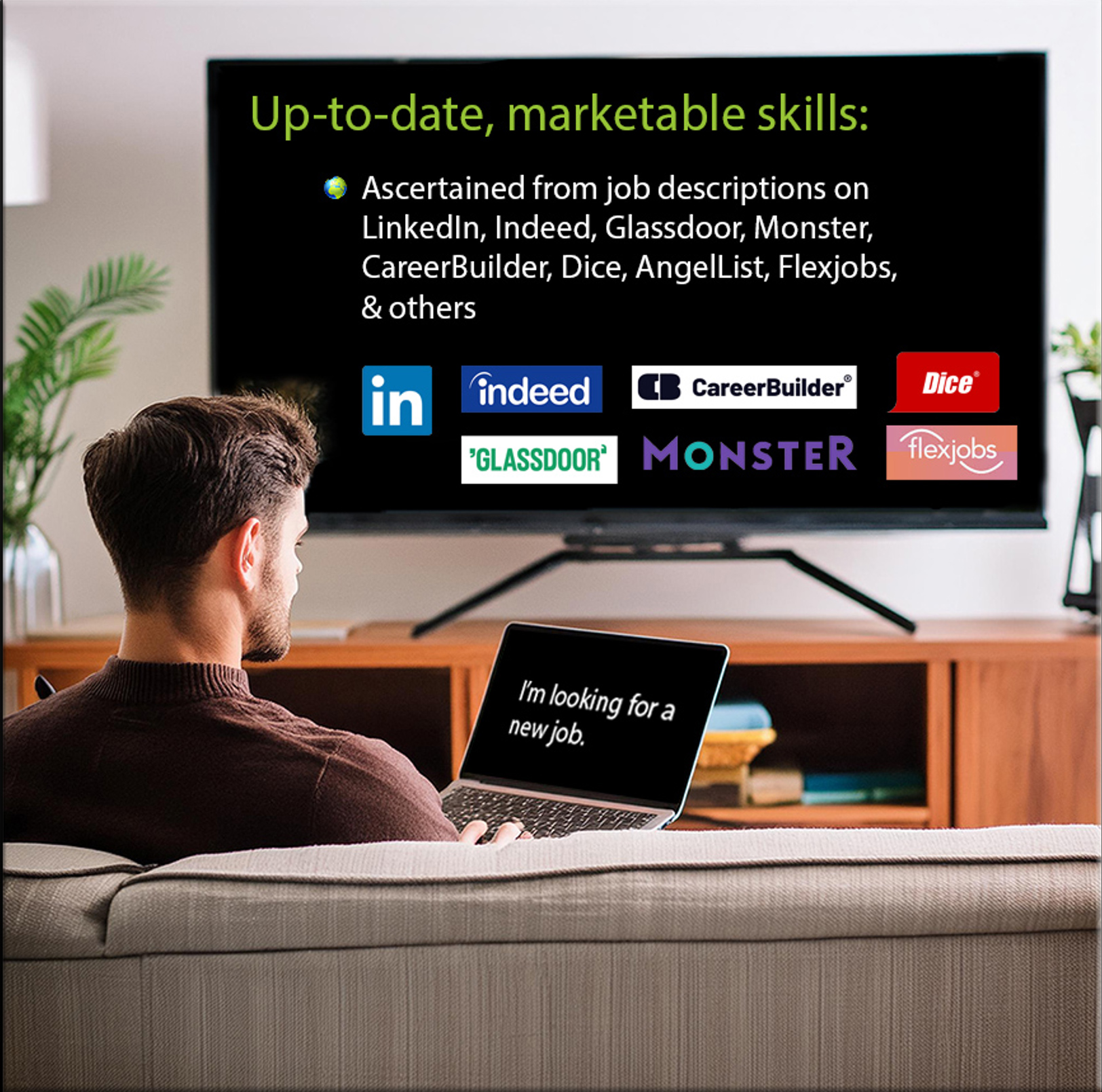

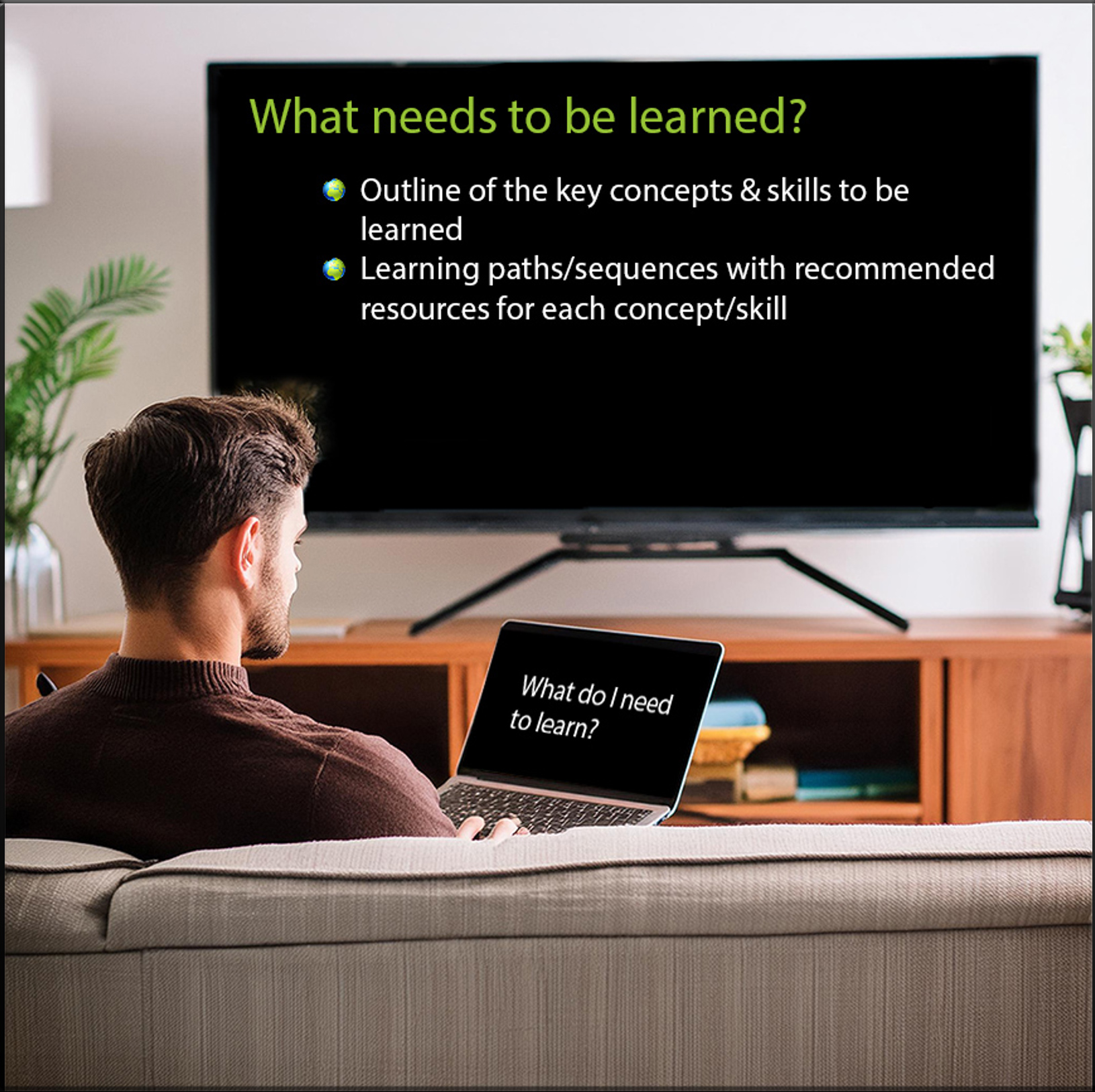
And that last part (about the WHERE do I develop those skills) will pull from many different institutions, people, companies, etc.
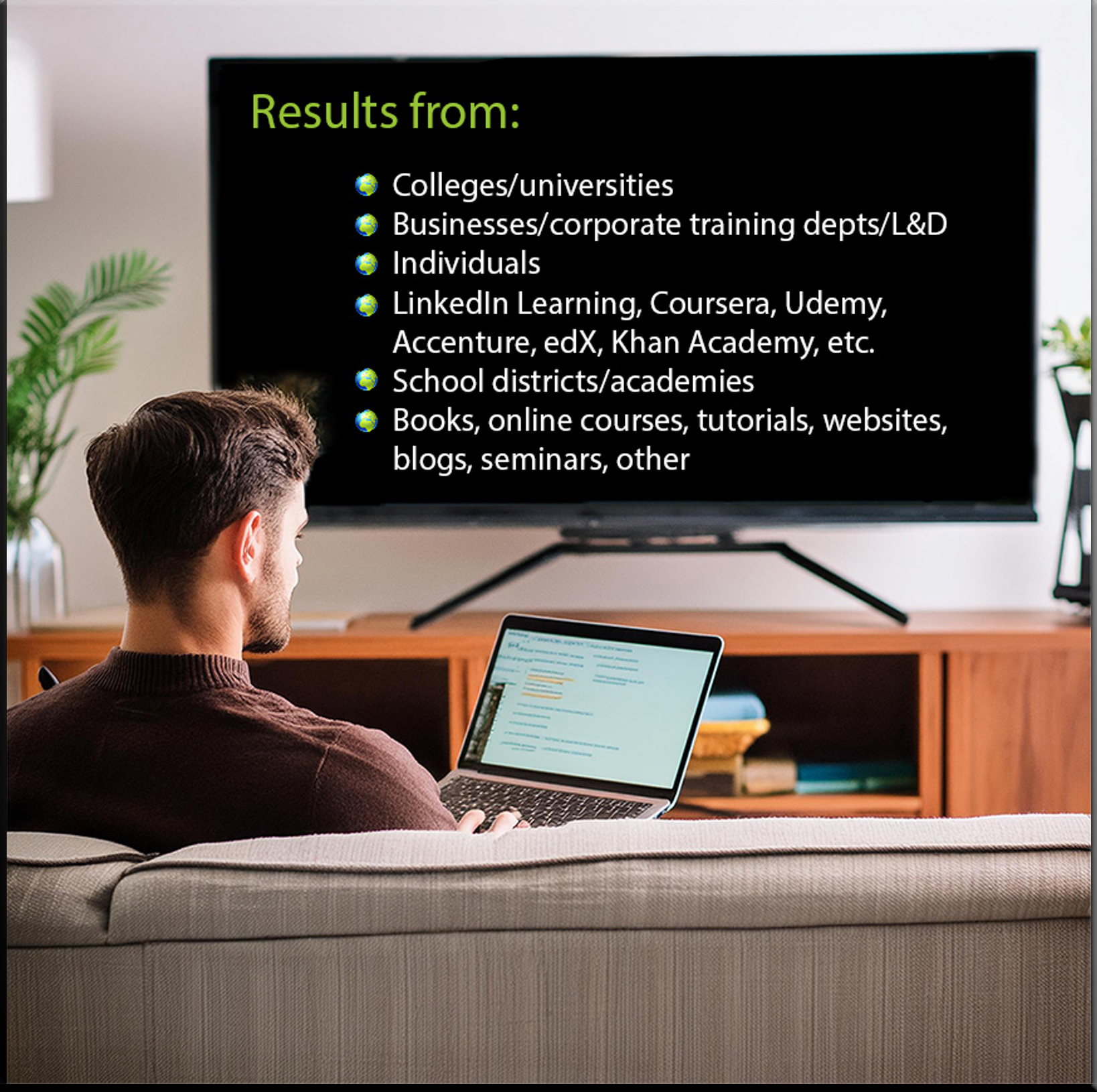
BUT PEOPLE are the key! Oftentimes, we need to — and prefer to — learn with others!


Half of Higher Ed Institutions Now Use AI for Outcomes Tracking, But Most Lag in Implementing Comprehensive Learner Records — from prnewswire.com; via GSV
SALT LAKE CITY, Oct. 22, 2024 /PRNewswire/ — Instructure, the leading learning ecosystem and UPCEA, the online and professional education association, announced the results of a survey on whether institutions are leveraging AI to improve learner outcomes and manage records, along with the specific ways these tools are being utilized. Overall, the study revealed interest in the potential of these technologies is far outpacing adoption. Most respondents are heavily involved in developing learner experiences and tracking outcomes, though nearly half report their institutions have yet to adopt AI-driven tools for these purposes. The research also found that only three percent of institutions have implemented Comprehensive Learner Records (CLRs), which provide a complete overview of an individual’s lifelong learning experiences.
New Survey Says U.S. Teachers Colleges Lag on AI Training. Here are 4 Takeaways — from the74million.org by ; via GSV
Most preservice teachers’ programs lack policies on using AI, CRPE finds, and are likely unready to teach future educators about the field.
In the nearly two years since generative artificial intelligence burst into public consciousness, U.S. schools of education have not kept pace with the rapid changes in the field, a new report suggests.
Only a handful of teacher training programs are moving quickly enough to equip new K-12 teachers with a grasp of AI fundamentals — and fewer still are helping future teachers grapple with larger issues of ethics and what students need to know to thrive in an economy dominated by the technology.
The report, from the Center on Reinventing Public Education, a think tank at Arizona State University, tapped leaders at more than 500 U.S. education schools, asking how their faculty and preservice teachers are learning about AI. Through surveys and interviews, researchers found that just one in four institutions now incorporates training on innovative teaching methods that use AI. Most lack policies on using AI tools, suggesting that they probably won’t be ready to teach future educators about the intricacies of the field anytime soon.
It is bonkers that I can write out all my life goals on a sheet of paper, take a photo of it, and just ask Claude or ChatGPT for help.
I get a complete plan, milestones, KPIs, motivation, and even action support to get there.
Less than 5% of the world uses the SOTA AI…
— Allie K. Miller (@alliekmiller) October 21, 2024
The 5 Secret Hats Teachers are Wearing Right Now (Thanks to AI!) — from aliciabankhofer.substack.com by Alicia Bankhofer
New, unanticipated roles for educators sitting in the same boat
As beta testers, we’re shaping the tools of tomorrow. As researchers, we’re pioneering new pedagogical approaches. As ethical guardians, we’re ensuring that AI enhances rather than compromises the educational experience. As curators, we’re guiding students through the wealth of information AI provides. And as learners ourselves, we’re staying at the forefront of educational innovation.
Duolingo Introduces AI-Powered Innovations at Duocon 2024 — from investors.duolingo.com; via Claire Zau
Duolingo’s new Video Call feature represents a leap forward in language practice for learners. This AI-powered tool allows Duolingo Max subscribers to engage in spontaneous, realistic conversations with Lily, one of Duolingo’s most popular characters. The technology behind Video Call is designed to simulate natural dialogue and provides a personalized, interactive practice environment. Even beginner learners can converse in a low-pressure environment because Video Call is designed to adapt to their skill level. By offering learners the opportunity to converse in real-time, Video Call builds the confidence needed to communicate effectively in real-world situations. Video Call is available for Duolingo Max subscribers learning English, Spanish, and French.
And here’s another AI-based learning item:
AI reading coach startup Ello now lets kids create their own stories — from techcrunch.com by Lauren Forristal; via Claire Zau
Ello, the AI reading companion that aims to support kids struggling to read, launched a new product on Monday that allows kids to participate in the story-creation process.
Called “Storytime,” the new AI-powered feature helps kids generate personalized stories by picking from a selection of settings, characters, and plots. For instance, a story about a hamster named Greg who performed in a talent show in outer space.
Workera’s CEO was mentored by Andrew Ng. Now he wants an AI agent to mentor you. — from techcrunch.com by Maxwell Zeff; via Claire Zau
On Tuesday, Workera announced Sage, an AI agent you can talk with that’s designed to assess an employee’s skill level, goals, and needs. After taking some short tests, Workera claims Sage will accurately gauge how proficient someone is at a certain skill. Then, Sage can recommend the appropriate online courses through Coursera, Workday, or other learning platform partners. Through chatting with Sage, Workera is designed to meet employees where they are, testing their skills in writing, machine learning, or math, and giving them a path to improve.
From DSC:
This is very much akin to what I’ve been trying to get at with my Learning from the Living [AI-Based Class] Room vision. And as learning agents come onto the scene, this type of vision should take off!
Walt Disney’s Wisdom: Lessons for Learning & Development Leaders — from learningguild.com by David Kelly
Here are a few of my favorite [quotes], along with the valuable lessons they offer us in Learning and Development.
- “Everyone has deadlines.”
- “I believe in being an innovator.”
- “Times and conditions change so rapidly that we must keep our aim constantly focused on the future.
- “I can never stand still. I must explore and experiment.”
- …and several other quotes.
Georgia Tech Aims to Take Lifetime Learning from Pastime to Pro — from workshift.org by Lilah Burke
As Americans live and work longer, many now find themselves needing to change jobs and careers several times within their lifetimes.
Now, Georgia Institute of Technology has created a new college to serve just these learners. Georgia Tech last week launched its College of Lifetime Learning, which will combine degree programs with non-degree programs, and seeks to educate 114K students by 2030. That would enable the university to double the current number of degrees granted and nondegree students served.
“What we’re hearing is that with the advancing pace of digitization taking place, changing demographics, people working longer, for example, higher ed needs to do something in addition to what it already has been doing” says Nelson Baker, interim dean of the new college.
Also see:
Is the Workplace the New College Campus? — from workshift.org by Joe Edelheit Ross
Now a quarter way through the 21st century, higher education is again in need of a reboot. Post Covid, colleges are closing one per week. More than 40M U.S. learners have started college but never finished. Nearly two-thirds of those learners would complete their degree but can’t afford to. Student debt now sits at almost $2T. Americans are losing faith in higher education.
Enter the apprenticeship degree, where students can earn a debt-free, four-year degree entirely embedded within a full-time, paid job. In the U.K., with government tax incentives, the apprenticeship-to-degree model has surged in eight years from zero to 50K new enrollments, making progress toward an expected 20% of postsecondary starts within the decade. As I have previously written, I believe the apprenticeship degree is just what American higher education needs to meet the moment.
The Rise Of Upskilling And Continuous Learning In A Slow Labor Market — from forbes.com by Kate Duchene
This stagnation in hiring is placing talent acquisition and retention near the top of the list of biggest concerns for business leaders. According to a pulse survey fielded by RGP in June, one in four financial decision makers (26%) say that acquiring and retaining talent is their top concern for the second half of 2024 – second only to the integration of more digital strategies, including AI and automation (30%). Nearly half (45%) of financial decision makers say their organization plans to increase investment in resources to reskill or upskill current employees this year.
AI agents are the future, and a lot is at stake — from forbes.com by Skip Sanzeri
What An Agent Is
Agents are computer programs that can autonomously perform tasks, make decisions and interact with humans or other computers. There are many different types of agents, and they are designed to achieve specific goals spanning our lives and nearly every industry, making them an integral and unstoppable part of our future.
Learning: AI agents will transform education by providing personalized learning experiences such as one-to-one tutoring. ChatGPT and other large language models (LLMs) are providing access to all digital knowledge now. An “agent” would act as a more personalized version of an LLM.
The hacking and control of an AI agent could lead to disastrous consequences, affecting privacy, security, the economy and societal stability. Proactive and comprehensive security strategies are essential to mitigate these risks in the future.
Generative AI and the Time Management Revolution — from ai-mindset.ai by Conor Grennan
Here’s how we need to change our work lives:
- RECLAIM: Use generative AI to speed up your daily tasks. Be ruthless. Anything that can be automated, should be.
- PROTECT: This is the crucial step. That time you’ve saved? Protect it like it’s the last slice of pizza. Block it off in your calendar. Tell your team it’s sacred.
- ELEVATE: Use this protected time for high-level thinking. Strategy. Innovation. The big, meaty problems you never have time for.
- AMPLIFY: Here’s where it gets cool. Use generative AI to amp up your strategic thinking. Need to brainstorm solutions to a complex problem? Want to analyze market trends? Generative AI is your new thinking partner.
The top 100 Gen AI Consumer Apps — 3rd edition — from a16z.com by Andreessen Horowitz
But amid the relentless onslaught of product launches, investment announcements, and hyped-up features, it’s worth asking: Which of these gen AI apps are people actually using? Which behaviors and categories are gaining traction among consumers? And which AI apps are people returning to, versus dabbling and dropping?
Welcome to the third installment of the Top 100 Gen AI Consumer Apps.
.
Gen AI’s next inflection point: From employee experimentation to organizational transformation — from mckinsey.com by Charlotte Relyea, Dana Maor, and Sandra Durth with Jan Bouly
As many employees adopt generative AI at work, companies struggle to follow suit. To capture value from current momentum, businesses must transform their processes, structures, and approach to talent.
To harness employees’ enthusiasm and stay ahead, companies need a holistic approach to transforming how the whole organization works with gen AI; the technology alone won’t create value.
Our research shows that early adopters prioritize talent and the human side of gen AI more than other companies (Exhibit 3). Our survey shows that nearly two-thirds of them have a clear view of their talent gaps and a strategy to close them, compared with just 25 percent of the experimenters. Early adopters focus heavily on upskilling and reskilling as a critical part of their talent strategies, as hiring alone isn’t enough to close gaps and outsourcing can hinder strategic-skills development. Finally, 40 percent of early-adopter respondents say their organizations provide extensive support to encourage employee adoption, versus 9 percent of experimenter respondents.
Adobe drops ‘Magic Fixup’: An AI breakthrough in the world of photo editing — from venturebeat.com by Michael Nuñez
Adobe researchers have revealed an AI model that promises to transform photo editing by harnessing the power of video data. Dubbed “Magic Fixup,” this new technology automates complex image adjustments while preserving artistic intent, potentially reshaping workflows across multiple industries.
Magic Fixup’s core innovation lies in its unique approach to training data. Unlike previous models that relied solely on static images, Adobe’s system learns from millions of video frame pairs. This novel method allows the AI to understand the nuanced ways objects and scenes change under varying conditions of light, perspective, and motion.
Top AI tools people actually use — from heatherbcooper.substack.com by Heather Cooper
How generative AI tools are changing the creative landscape
The shift toward creative tools
Creative tools made up 52% of the top generative AI apps on the list. This seems to reflect a growing consumer demand for accessible creativity through AI with tools for image, music, speech, video, and editing.
Creative categories include:
- Image: Civitai, Leonardo, Midjourney, Yodayo, Ideogram, SeaArt
- Music: Suno, Udio, VocalRemover
- Speech: ElevenLabs, Speechify
- Video: Luma AI, Viggle, Invideo AI, Vidnoz, ClipChamp
- Editing: Cutout Pro, Veed, Photoroom, Pixlr, PicWish
Why it matters:
Creative apps are gaining traction because they empower digital artists and content creators with AI-driven tools that simplify and enhance the creative process, making professional-level work more accessible than ever.
Augmented Course Design: Using AI to Boost Efficiency and Expand Capacity — from er.educause.edu by Berlin Fang and Kim Broussard
The emerging class of generative AI tools has the potential to significantly alter the landscape of course development.
Using generative artificial intelligence (GenAI) tools such as ChatGPT, Gemini, or CoPilot as intelligent assistants in instructional design can significantly enhance the scalability of course development. GenAI can significantly improve the efficiency with which institutions develop content that is closely aligned with the curriculum and course objectives. As a result, institutions can more effectively meet the rising demand for flexible and high-quality education, preparing a new generation of future professionals equipped with the knowledge and skills to excel in their chosen fields.1 In this article, we illustrate the uses of AI in instructional design in terms of content creation, media development, and faculty support. We also provide some suggestions on the effective and ethical uses of AI in course design and development. Our perspectives are rooted in medical education, but the principles can be applied to any learning context.
…
Table 1 summarizes a few low-hanging fruits in AI usage in course development.
.
| Practical Use of AI | Use Scenarios and Examples |
|---|---|
| Inspiration |
|
| Supplementation |
|
| Improvement |
|
| Generation |
|
| Expansion |
|
.
Also see:
10 Ways Artificial Intelligence Is Transforming Instructional Design — from er.educause.edu by Rob Gibson
Artificial intelligence (AI) is providing instructors and course designers with an incredible array of new tools and techniques to improve the course design and development process. However, the intersection of AI and content creation is not new.
I have been telling my graduate instructional design students that AI technology is not likely to replace them any time soon because learning and instruction are still highly personalized and humanistic experiences. However, as these students embark on their careers, they will need to understand how to appropriately identify, select, and utilize AI when developing course content. Examples abound of how instructional designers are experimenting with AI to generate and align student learning outcomes with highly individualized course activities and assessments. Instructional designers are also using AI technology to create and continuously adapt the custom code and power scripts embedded into the learning management system to execute specific learning activities.Footnote1 Other useful examples include scripting and editing videos and podcasts.
Here are a few interesting examples of how AI is shaping and influencing instructional design. Some of the tools and resources can be used to satisfy a variety of course design activities, while others are very specific.
Taking the Lead: Why Instructional Designers Should Be at the Forefront of Learning in the Age of AI — from medium.com by Rob Gibson
Education is at a critical juncture and needs to draw leaders from a broader pool, including instructional designers
The world of a medieval stone cutter and a modern instructional designer (ID) may seem separated by a great distance, but I wager any ID who upon hearing the story I just shared would experience an uneasy sense of déjà vu. Take away the outward details, and the ID would recognize many elements of the situation: the days spent in projects that fail to realize the full potential of their craft, the painful awareness that greater things can be built, but are unlikely to occur due to a poverty of imagination and lack of vision among those empowered to make decisions.
Finally, there is the issue of resources. No stone cutter could ever hope to undertake a large-scale enterprise without a multitude of skilled collaborators and abundant materials. Similarly, instructional designers are often departments of one, working in scarcity environments, with limited ability to acquire resources for ambitious projects and — just as importantly — lacking the authority or political capital needed to launch significant initiatives. For these reasons, instructional design has long been a profession caught in an uncomfortable stasis, unable to grow, evolve and achieve its full potential.
That is until generative AI appeared on the scene. While the discourse around AI in education has been almost entirely about its impact on teaching and assessment, there has been a dearth of critical analysis regarding AI’s potential for impacting instructional design.
We are at a critical juncture for AI-augmented learning. We can either stagnate, missing opportunities to support learners while educators continue to debate whether the use of generative AI tools is a good thing, or we can move forward, building a transformative model for learning akin to the industrial revolution’s impact.
Too many professional educators remain bound by traditional methods. The past two years suggest that leaders of this new learning paradigm will not emerge from conventional educational circles. This vacuum of leadership can be filled, in part, by instructional designers, who are prepared by training and experience to begin building in this new learning space.
What Students Want When It Comes To AI — from onedtech.philhillaa.com by Glenda Morgan
The Digital Education Council Global AI Student Survey 2024
The Digital Education Council (DEC) this week released the results of a global survey of student opinions on AI. It’s a large survey with nearly 4,000 respondents conducted across 16 countries, but more importantly, it asks some interesting questions. There are many surveys about AI out there right now, but this one stands out. I’m going to go into some depth here, as the entire survey report is worth reading.
.
.
AI is forcing a teaching and learning evolution — from eschoolnews.com by Laura Ascione
AI and technology tools are leading to innovative student learning–along with classroom, school, and district efficiency
Key findings from the 2024 K-12 Educator + AI Survey, which was conducted by Hanover Research, include:
- Teachers are using AI to personalize and improve student learning, not just run classrooms more efficiently, but challenges remain
- While post-pandemic challenges persist, the increased use of technology is viewed positively by most teachers and administrators
- …and more
From DSC:
I wonder…how will the use of AI in education square with the issues of using smartphones/laptops within the classrooms? See:
- Why Schools Are Racing to Ban Student Phones — from nytimes.com by Natasha Singer; via GSV
As the new school year starts, a wave of new laws that aim to curb distracted learning is taking effect in Indiana, Louisiana and other states.
A three-part series from Dr. Phillippa Hardman:
Part 1: Writing Learning Objectives
The Results Part 1: Writing Learning Objectives
In this week’s post I will dive into the results from task 1: writing learning objectives. Stay tuned over the next two weeks to see all of the the results.
Part 2: Selecting Instructional Strategies.
The Results Part 2: Selecting an Instructional Strategy
Welcome back to our three-part series exploring the impact of AI on instructional design.
…
This week, we’re tackling a second task and a crucial aspect of instructional design: selecting instructional strategies. The ability to select appropriate instructional strategies to achieve intended objectives is a mission-critical skill for any instructional designer. So, can AI help us do a good job of it? Let’s find out!
Part 3: How Close is AI to Replacing Instructional Designers?
The Results Part 3: Creating a Course Outline
Today, we’re diving into what many consider to be the role-defining task of the instructional designer: creating a course design outline.
ChatGPT Cheat Sheet for Instructional Designers! — from Alexandra Choy Youatt EdD
Instructional Designers!
Whether you’re new to the field or a seasoned expert, this comprehensive guide will help you leverage AI to create more engaging and effective learning experiences.
What’s Inside?
Roles and Tasks: Tailored prompts for various instructional design roles and tasks.
Formats: Different formats to present your work, from training plans to rubrics.
Learning Models: Guidance on using the ADDIE model and various pedagogical strategies.
Engagement Tips: Techniques for online engagement and collaboration.
Specific Tips: Industry certifications, work-based learning, safety protocols, and more.
Who Can Benefit?
Corporate Trainers
Curriculum Developers
E-Learning Specialists
Instructional Technologists
Learning Experience Designers
And many more!
…
ChatGPT Cheat Sheet | Instructional Designer
5 AI Tools I Use Every Day (as a Busy Student) — from theaigirl.substack.com by Diana Dovgopol
AI tools that I use every day to boost my productivity.
#1 Gamma
#2 Perplexity
#3 Cockatoo
I use this AI tool almost every day as well. Since I’m still a master’s student at university, I have to attend lectures and seminars, which are always in English or German, neither of which is my native language. With the help of Cockatoo, I create scripts of the lectures and/or translations into my language. This means I don’t have to take notes in class and then manually translate them afterward. All I need to do is record the lecture audio on any device or directly in Cockatoo, upload it, and then you’ll have the audio and text ready for you.
…and more
Students Worry Overemphasis on AI Could Devalue Education — from insidehighered.com by Juliette Rowsell
Report stresses that AI is “new standard” and universities need to better communicate policies to learners.
Rising use of AI in higher education could cause students to question the quality and value of education they receive, a report warns.
This year’s Digital Education Council Global AI Student Survey, of more than 3,800 students from 16 countries, found that more than half (55 percent) believed overuse of AI within teaching devalued education, and 52 percent said it negatively impacted their academic performance.
Despite this, significant numbers of students admitted to using such technology. Some 86 percent said they “regularly” used programs such as ChatGPT in their studies, 54 percent said they used it on a weekly basis, and 24 percent said they used it to write a first draft of a submission.
Higher Ed Leadership Is Excited About AI – But Investment Is Lacking — from forbes.com by Vinay Bhaskara
As corporate America races to integrate AI into its core operations, higher education finds itself in a precarious position. I conducted a survey of 63 university leaders revealing that while higher ed leaders recognize AI’s transformative potential, they’re struggling to turn that recognition into action.
This struggle is familiar for higher education — gifted with the mission of educating America’s youth but plagued with a myriad of operational and financial struggles, higher ed institutions often lag behind their corporate peers in technology adoption. In recent years, this gap has become threateningly large. In an era of declining enrollments and shifting demographics, closing this gap could be key to institutional survival and success.
The survey results paint a clear picture of inconsistency: 86% of higher ed leaders see AI as a “massive opportunity,” yet only 21% believe their institutions are prepared for it. This disconnect isn’t just a minor inconsistency – it’s a strategic vulnerability in an era of declining enrollments and shifting demographics.
(Generative) AI Isn’t Going Anywhere but Up — from stefanbauschard.substack.com by Stefan Bauschard
“Hype” claims are nonsense.
There has been a lot of talk recently about an “AI Bubble.” Supposedly, the industry, or at least the generative AI subset of it, will collapse. This is known as the “Generative AI Bubble.” A bubble — a broad one or a generative one — is nonsense. These are the reasons we will continue to see massive growth in AI.
AI Readiness: Prepare Your Workforce to Embrace the Future — from learningguild.com by Danielle Wallace
Artificial Intelligence (AI) is revolutionizing industries, enhancing efficiency, and unlocking new opportunities. To thrive in this landscape, organizations need to be ready to embrace AI not just technologically but also culturally.
Learning leaders play a crucial role in preparing employees to adapt and excel in an AI-driven workplace. Transforming into an AI-empowered organization requires more than just technological adoption; it demands a shift in organizational mindset. This guide delves into how learning leaders can support this transition by fostering the right mindset attributes in employees.
Claude AI for eLearning Developers — from learningguild.com by Bill Brandon
Claude is fast, produces grammatically correct text, and outputs easy-to-read articles, emails, blog posts, summaries, and analyses. Take some time to try it out. If you worry about plagiarism and text scraping, put the results through Grammarly’s plagiarism checker (I did not use Claude for this article, but I did send the text through Grammarly).
Survey: Top Teacher Uses of AI in the Classroom — from thejournal.com by Rhea Kelly
A new report from Cambium Learning Group outlines the top ways educators are using artificial intelligence to manage their classrooms and support student learning. Conducted by Hanover Research, the 2024 K-12 Educator + AI Survey polled 482 teachers and administrators at schools and districts that are actively using AI in the classroom.
More than half of survey respondents (56%) reported that they are leveraging AI to create personalized learning experiences for students. Other uses included providing real-time performance tracking and feedback (cited by 52% of respondents), helping students with critical thinking skills (50%), proofreading writing (47%), and lesson planning (44%).
On the administrator side, top uses of AI included interpreting/analyzing student data (61%), managing student records (56%), and managing professional development (56%).
Addendum on 8/14/24:











